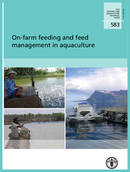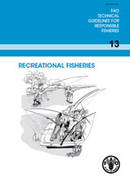Publicaciones
This technical paper provides a comprehensive review of on-farm feeding and feed management practices in aquaculture.
This technical paper provides a comprehensive review of on-farm feeding and feed management practices in aquaculture. It comprises of a) ten case studies on feeding and feed management practices carried out in seven selected countries of Asia and Africa for eight species that belong to four major farmed species of freshwater finfish and shellfish; b) an analysis of the findings...
The article Eat More Fish - A Healthy Alternative, Farmed fish - A Good Choice addresses the pros and cons associated with the consumption of farmed fish in addition to stereotypes of the aquaculture industry.
Article by Jogeir Toppe found in FAO Aquaculture Newsletter.
The document compiles the scientific information collected by the experts for the Joint FAO/IOC/WHO ad hoc Expert Consultation on biotoxins in bivalve molluscs held in Oslo, Norway, 26–30 September 2004 to answer the request of scientific advice expressed by the Codex Committee for Fish and Fishery Products (CCFFP). In order to satisfy the many requests received by FAO to disseminate the information collected over these years since 2004, the data and information available were edited...
Recreational fishing is defined as fishing of aquatic animals (mainly fish) that do not constitute the individual's primary resource to meet basic nutritional needs and are not generally sold or otherwise traded on export, domestic or black markets. Recreational fishing constitutes the dominant use of wild fish stocks in all freshwaters of industrialized countries, and it is prominent in many coastal ecosystems. The importance of recreational fisheries is increasing rapidly in many transitional economies. The...
More than 46 percent of the total global aquaculture production in 2008 was dependent upon the supply of external feed inputs. For the aquaculture sector to maintain its current average growth rate of 8 to 10 percent per year to 2025, the supply of nutrient and feed inputs will have to grow at a similar rate. This had been readily attainable when the industry was young. It may not be the case anymore as the...






